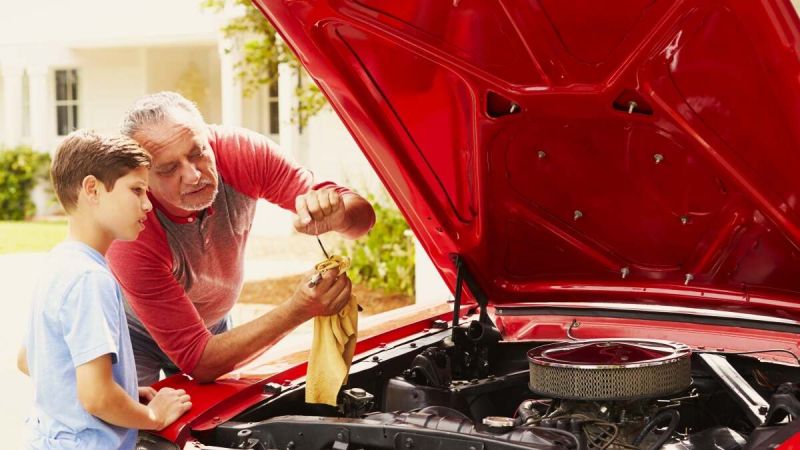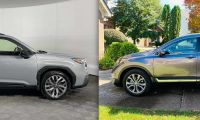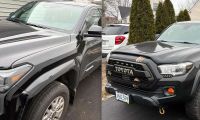The host of a recent Car Care Nut YouTube channel video has posted a "how-to" that serves both the used car shopper and the potential new car shopper who is considering trading in their trusted old friend for a newer model.
However, inadvertently, the video also caught my attention through a post comment that, in my opinion, points to at least two societal problems that a retiree like me observes daily: news reduced to soundbites to make it more palatable to the public and ageism discrimination.

The Soapbox Section You Can Skip…But Would Like If You Didn’t
Firstly, the soundbite news problem: Since the advent of the internet, society has changed, and so has how it receives information — it is significantly shorter, faster, and just enough to elicit an immediate knee jerk response. In short, it is brain cavity candy. If you want to know what is really going on in the world, the best resource is The Economist; however, it is on the expensive side of a news subscription. But that's the price of getting reliable, fact-checked news.
Secondly, the ageism problem: Historically, the younger generation has always had a myopic view of its elders. And sometimes, understandably so. However, the idea that retirees have nothing to do is glaringly false. At the risk of sounding like an evening pharmaceutical advertisement, aside from retirees with limiting health issues, my experience is that it is a generation that is more broadly active than the younger generation. We've paid our dues and have the time, money, and hindsight to rediscover life through a mortality lens. It's why we roll with dark shades.
OK, now that is off my chest, back to why this hour-long video is what everyone needs.
The Wisdom of Inspecting Your Family Car As If You Were Buying It Used
While a prepurchase inspection of a used car is a must we've recommended―perhaps ad nauseam, at times―what we have not pointed out is that a nearly identical inspection before deciding on replacing your car IS just as important.
With new car pricing and the hesitation you may have before joining the hybrid and EV crowd being what it is today, this makes sense―especially when you see the savings of passing on a dependable used car to a family member such as a college-bound son or daughter, or as a teen driver's first car.
Related article: People Seem To Think I Am The Worst Mother Ever For Allowing My Daughter To Buy A 2024 Toyota Corolla With 3,000 Miles On It
But I Don't Have the Time to Watch an Hour-Long YouTube Automotive Video!
OK, I get it. Time is precious for most of us, and watching an instruction video that is just a bit over an hour long seems to be asking a lot.
However, despite what the post above complained about the video, the overall theme of responses shows why an hour-long video sometimes merits an hour of a person's time:
Advertising I wish this video existed before I bought the 2014 Corolla that I'm now pretty much stuck with. It looked nice, drove OK and didn't have the common leaks, but I had no idea it had 5 previous owners, poor maintenance history and potentially undisclosed commercial use. The car was already burning 2 quarts of oil every 3000 miles at 100k miles due to 10k mile oil changes for CITY driving, misfires due to uneven compression from the scored cylinder walls (worst on cylinder 3) and the CVT is now on its way out," ―@f16-chamak
The Sub 5-Minute Video Summary Read
In case you do not have the time (or inclination) to watch the entire video about how to inspect this 2014 Lexus ES 350 model, here are the summarized key points you can benefit from when it comes to a used car's prepurchase inspection or your current car's post-ownership inspecting that you can mostly DIY today.
1.Take It For a Test Drive
- How well does it start when the engine is cold while paying attention to any knocking sounds.
- Interior function tests: AC, window controls, sunroof action, signals, headlights, radio, door locks, windshield wipers and blades, mirrors, etc.
- Driving over some speed bumps, listening for creaking, clunking, or other noise.
- Perform a brake check before getting on the highway and then again afterward, with some moderately hard braking, to feel for any heavy pulsations from the braking system.
- Checking if the front is aligned by the car staying on track rather than veering slightly to one side And if the steering wheel is centered while going straight.
- Swerve from side to side and listen for any wheel noise indicating wheel bearing wear.
- Accelerating while listening to engine noise and transmission feel as the car advances its gears.
- Slowing down after accelerating and feeling for any transmission shudder, indicating a possible torque converter problem.
2. Popping Open the Engine Hood
- While raising the hood, look for signs of repainting or repairs on the hood surface as well along the edges for overspray.
- What is your overall impression of the engine bay? Is it clean and well-maintained, or has it been neglected?
- Test the 12-volt car battery using this battery maintenance guide.
- Check the oil fill and oil dipstick.
- Remove the engine cover and, with a penlight, closely inspect the engine for signs of fluid leaks, aftermarket add-ons, belt cracks, rodent signs, and jerry-rig repairs. Check the radiator for leaks, the hoses for softness, the air filter, and the brake fluid level and condition using a test kit (the same applies to the coolant acidity kit).
- Remove and inspect at least one sparkplug, followed by a borescope inspection of the cylinder for signs of wall scoring and valve burning.
3. Perform a Walk-Around Inspection
- Look for panel gaps, chips, paint discrepancies, cracked taillights, rust inside the truck, and original or replacement vehicle glass. Also, inspect the side view mirrors. In short, any signs it had been in an accident.
- Scan tool analysis farmed out to a mechanic with a Toyota-specific scan tool and software to check the vehicle's history and look for evidence of any trouble codes that may have been recently erased to hide a problem.
4. On a Lift Inspection
- A good opportunity to check for wheel play, strut leaking, and brake condition. Remove the skid panels and inspect for engine, transmission, and coolant leaks. Look for CV boot cracking, breaks, and leaking. Check for sway bar and control arm play, as well as ball joint wear.
- Inspect the exhaust for excessive rust and ensure the catalytic converter is not missing.
5. Mistakes During a Prepurchase Inspection
- Not doing your research ahead of time on the specific model you are looking to buy. You need to research the specific issues reported for each model to determine what to look for and ensure it is not an existing or previously resolved issue with that car.
- Not being thorough during the inspection.
The final inspection determination by the host:
Folks, this generation Lexus ES 350 is hands down the best and the nicest used car you can buy...and it doesn't even take premium…This is easily the best Lexus you can buy in 2025 used."
For more detailed info during the inspection (which I highly recommend), you can watch the video at this link.
Tell Us What You Think: Were you insulted by the ageist comment? Are informative one hour-long videos unnecessary and unwanted? How would you like your car-related information brought to you? Let us know about it in the comments section below.
Timothy Boyer is an automotive reporter based in Cincinnati who currently researches and works on restoring older vehicles with engine modifications for improved performance. He also reports on modern cars (including EVs) with a focus on DIY mechanics, buying and using tools, and other related topical automotive repair news. Follow Tim on Twitter at @TimBoyerWrites as well as on Facebook and his automotive blog "Zen and the Art of DIY Car Repair" for useful daily news and topics related to new and used cars and trucks.
Image Source: Deposit Photos












